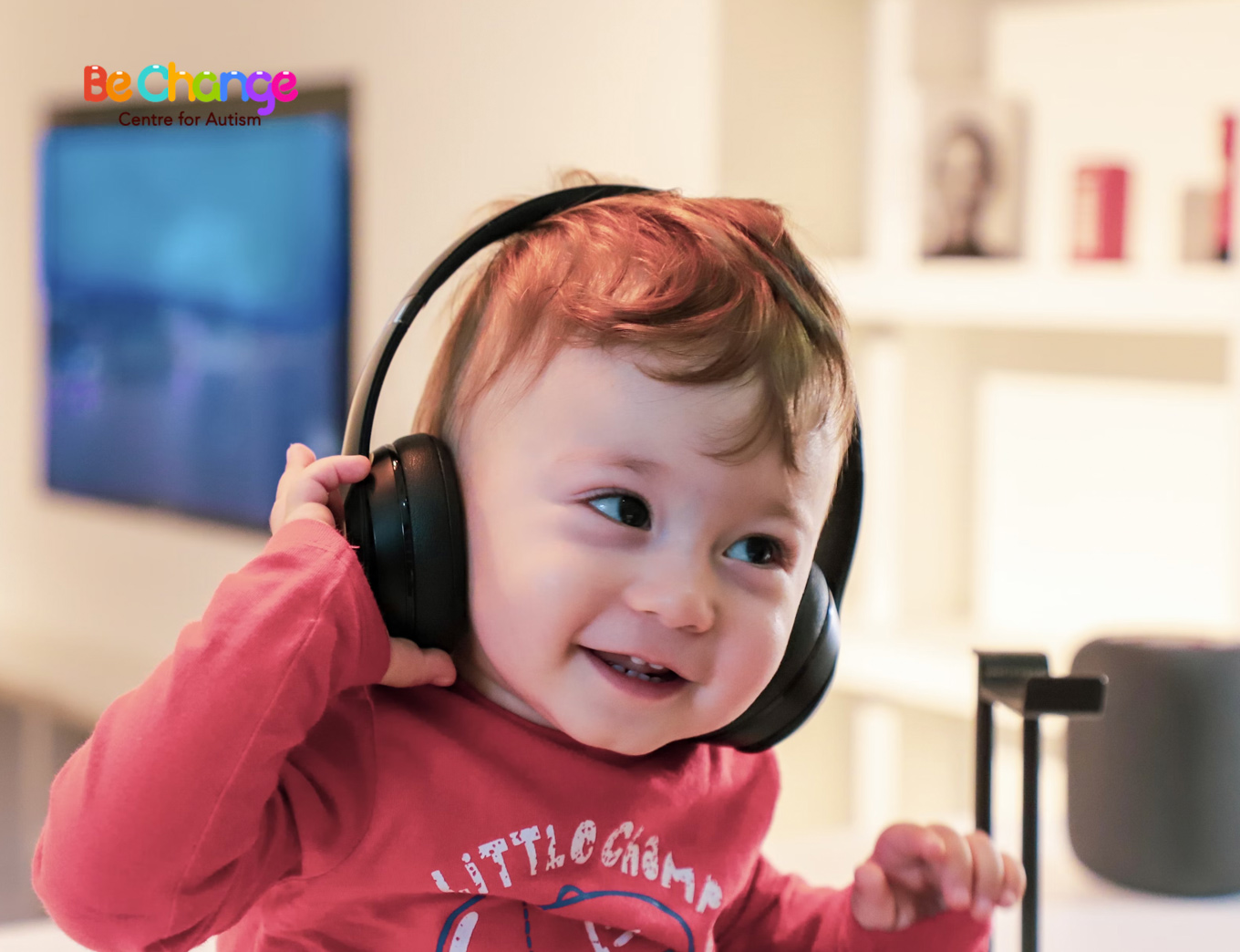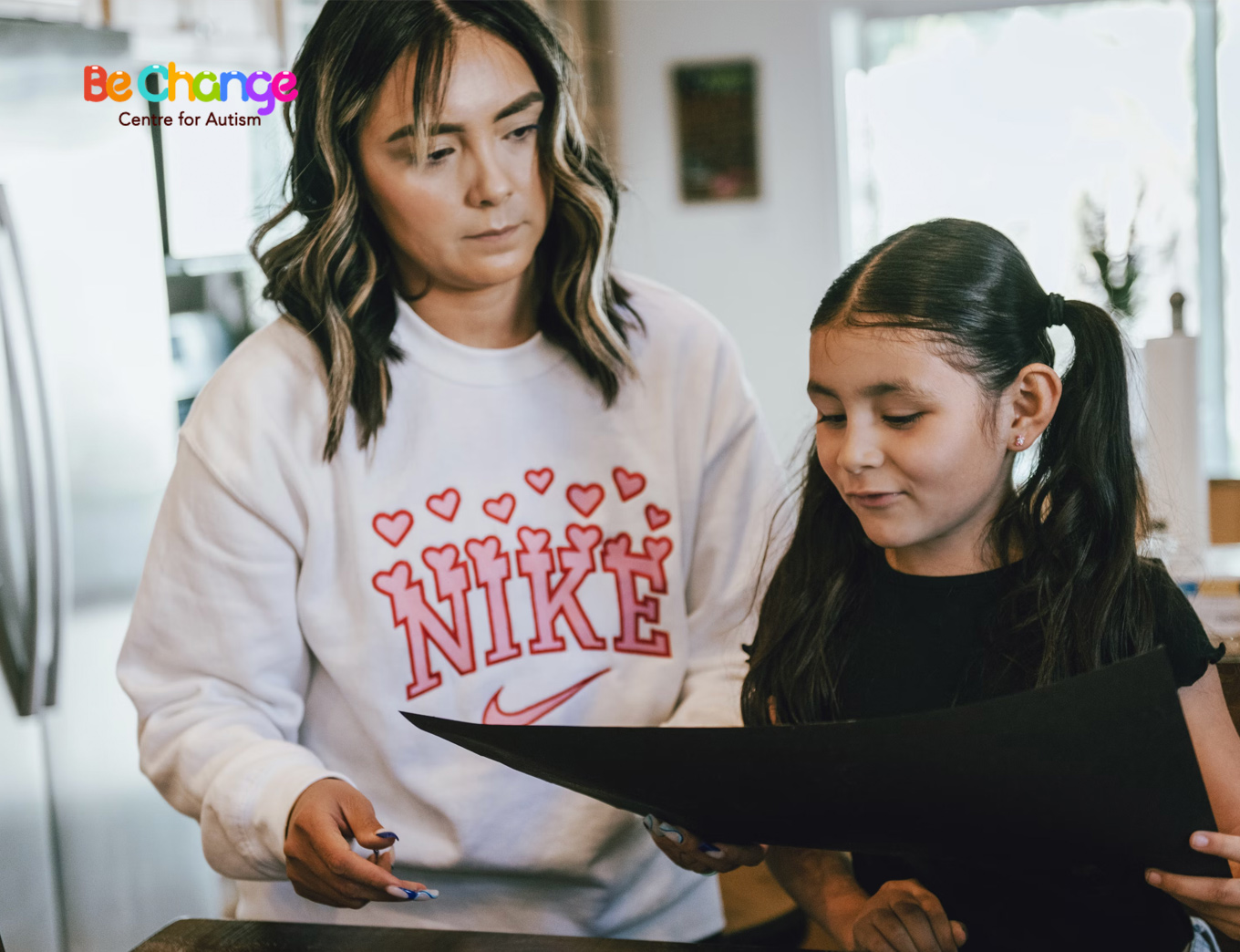My name is Tahzine, and I’m a senior therapist at Be Change Center for Autism in Whitefield, Bangalore. Today, I want to share a story about how we helped a 4-year-old autistic girl improve her communication skills through Functional Communication Training (FCT).

When she first came to us, she was having frequent tantrums. Her parents were very concerned and didn’t know how to help her. These tantrums usually happened when she wanted something but couldn’t express her needs. Her parents often felt helpless and didn’t understand what she needed, which made the situation even more stressful for everyone.
At Be Change, we believe that every behavior has a purpose. Our first step was to understand why she was having these tantrums. We conducted a thorough functional assessment, observing her in different settings and talking to her parents about her behavior. It became clear that her tantrums were a way for her to communicate her needs, especially when she wanted attention or a specific item.
Once we identified the function of her behavior, we developed a plan using Functional Communication Training. Our goal was to teach her a more appropriate way to communicate her needs, replacing her tantrums with effective communication.
Check out our new branch : https://maps.app.goo.gl/SNDxav7fybanc9Qe6

We started with simple, direct instruction in a controlled environment. Since she was not yet verbal, we decided to teach her to use a picture exchange communication system (PECS). This method involves using pictures to communicate needs and wants. We showed her how to give us a picture of the item she wanted in exchange for receiving that item.
At first, we used hand-over-hand prompting to help her pick up the picture and hand it to us. Every time she did this correctly, we immediately gave her the item she wanted. This immediate reinforcement helped her understand that using pictures was an effective way to communicate.
She picked up the skill quickly. We saw her starting to use the pictures independently after just a few sessions. As she became more confident, we gradually reduced our prompts, encouraging her to use the pictures on her own. Consistency was key, and we made sure that her parents were also using the same system at home.
Training her parents was an essential part of the process. We held several sessions with them, demonstrating how to prompt her to use the pictures and how to reinforce her communication. They were very supportive and eager to learn, which made a big difference in her progress.
With time and practice, her tantrums began to decrease. She started using the pictures more consistently to express her needs. Instead of crying or screaming for a toy, she would calmly hand us the picture of the toy she wanted. The transformation was remarkable. Her parents reported that their home life had become much calmer and more enjoyable.
As the months went by, the progress Sam made was remarkable. He went from being a frustrated and largely non-verbal child to someone who could express his needs, label his environment, and engage in simple conversations. The transformation was not only evident in his communication skills but also in his behavior. With the ability to express himself, Sam’s frustration and related behavioral issues significantly decreased.
One of the most rewarding moments was seeing Sam interact with his peers. He started initiating play by asking other children to join him, something he had never done before. His parents were overjoyed, sharing stories of how their son was now more engaged and happy at home and in social settings.
Contact us today : https://bechange.in/contacts/

Seeing her progress was incredibly rewarding for all of us at BeChange. She was happier and more relaxed, and her parents were relieved to have a way to understand and meet her needs. The success of Functional Communication Training in her case showed how powerful and effective this method can be.
Our journey with her didn’t stop there. As she grew more comfortable with PECS, we started working on expanding her communication skills further. We introduced more pictures and began teaching her to use short sentences. She continued to thrive, and her communication abilities improved steadily.
This experience reinforced our belief in the importance of individualized, evidence-based interventions. At BeChange, we are committed to helping each child reach their full potential by using the best practices in ABA therapy. Her story is just one example of how targeted, functional communication training can make a profound difference in the lives of children with autism and their families.
In conclusion, her story is a testament to the power of Functional Communication Training. By understanding the function of her behavior and providing her with an effective way to communicate, we were able to reduce her tantrums and improve her quality of life. At BeChange Center for Autism, we are dedicated to making such positive changes for all the children we work with.
Join Autism Support Facebook Group : https://www.facebook.com/groups/SupportAutism
